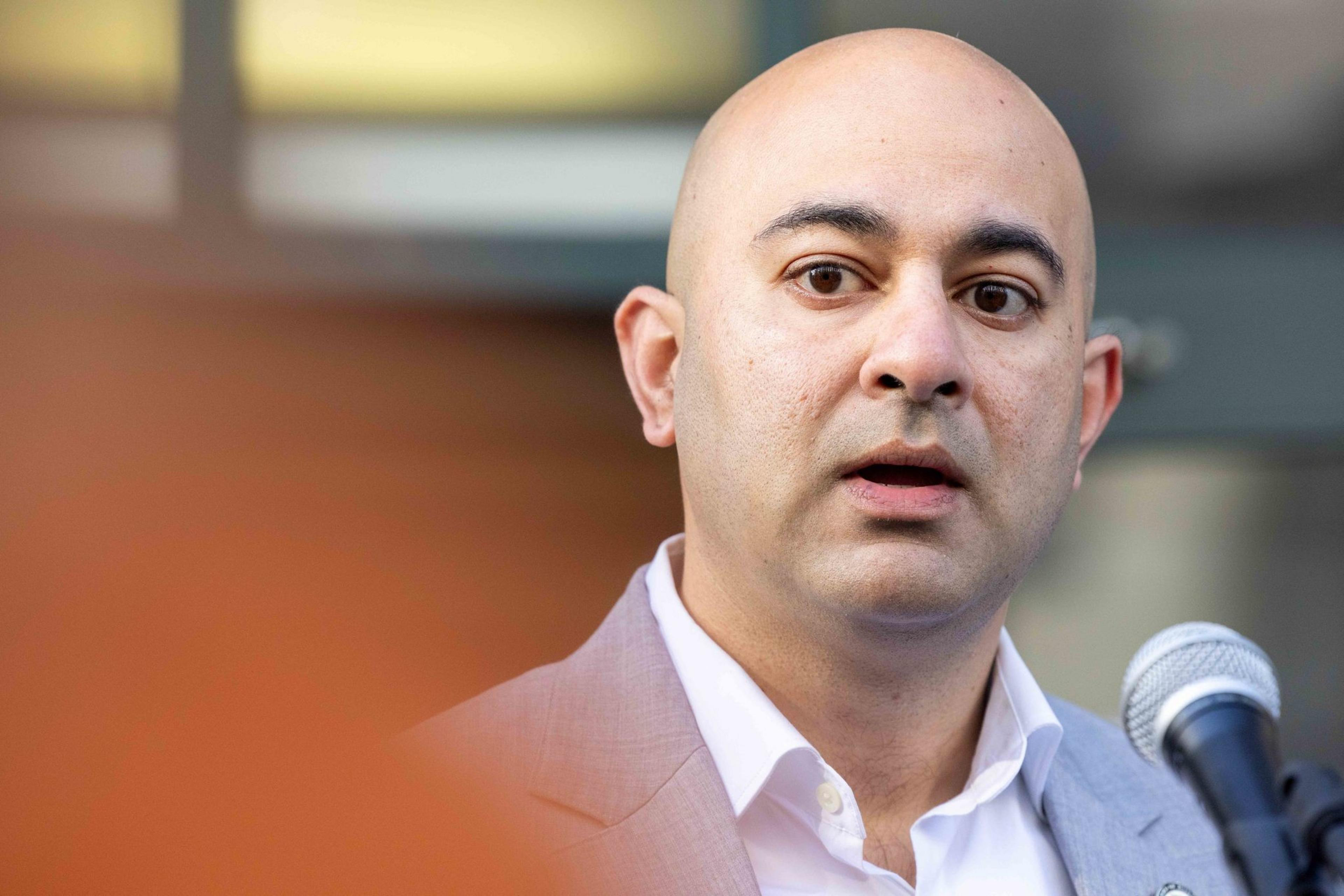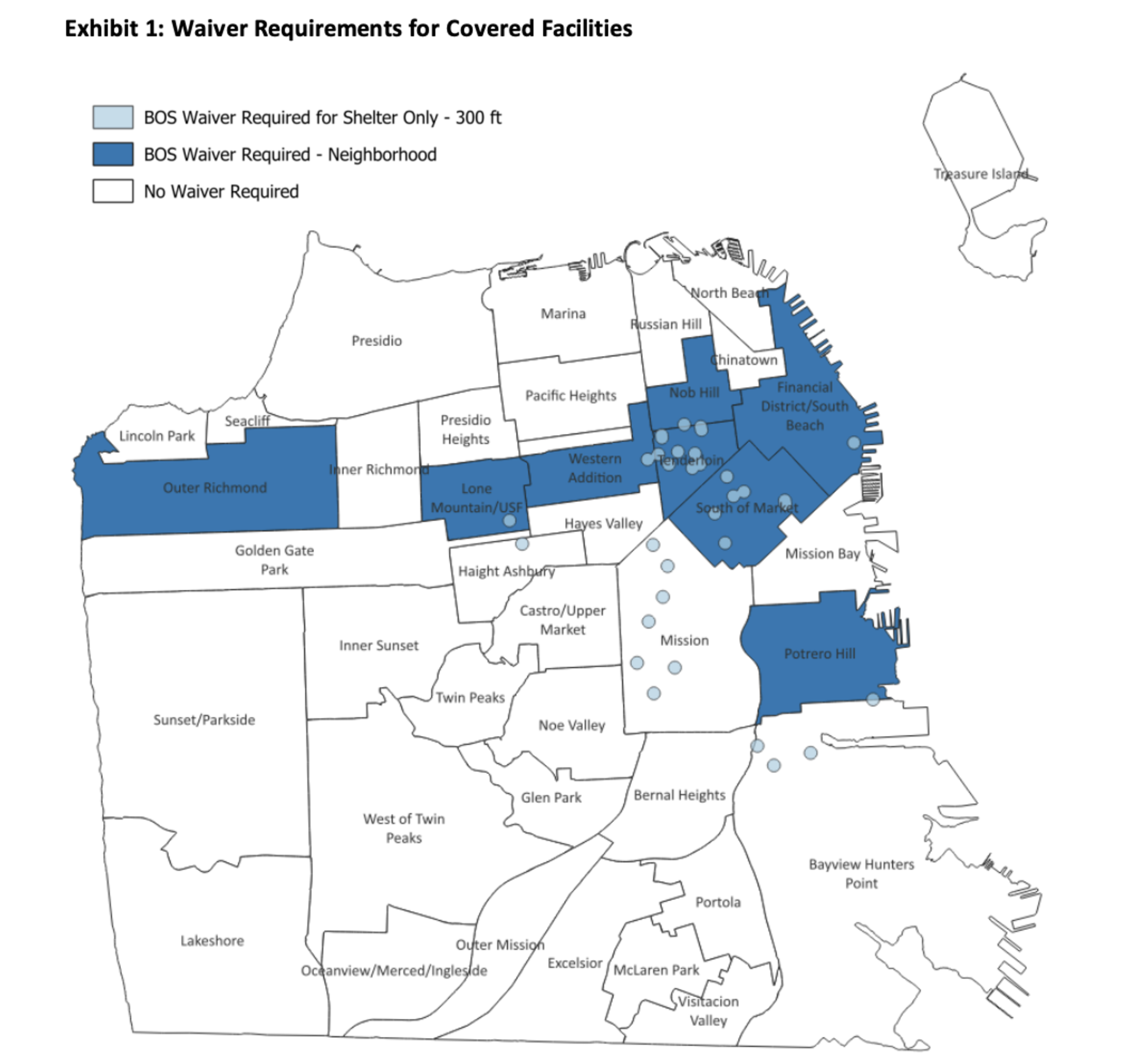A sweeping proposal that would have forced every San Francisco district to make space for a homeless shelter is expected to be scaled back Wednesday amid pressure from Mayor Daniel Lurie to make the bill more neighborhood-specific.
Supervisor Bilal Mahmood’s One City Shelter Act initially imposed a blanket requirement for supervisorial districts to approve at least one shelter, transitional housing facility, or residential treatment center by mid-2026, while banning new shelters within 1,000 feet of existing ones.
Lurie had concerns with what his office described as an arbitrary mandate that lacked a data-driven analysis. He pushed for revisions to narrow the scope of the legislation and, critically, remove the mandate for new shelters in each district.
The new version would instead use city data to identify specific neighborhoods with a disproportionate number of homeless people compared with available beds and treatment services. Neighborhoods that are “oversaturated” with shelters compared with the size of their homeless populations would largely be shielded from adding more services unless the Board of Supervisors votes to add them.

Neighborhoods with more homeless people than beds and treatment programs would be targeted for additional shelter and services under the revised plan.
Lurie praised the new approach.
“We will continue that work with urgency while ensuring that every neighborhood gets to be part of San Francisco’s comeback,” the mayor said in a statement.
The agreement follows months of negotiations between Lurie, Mahmood, and other supervisors who wanted to see more city districts step up to share the burden of adding shelters.
While Mahmood had the votes to pass the legislation through the board with a simple majority, he faced the prospect of a veto from Lurie; without a two-thirds majority vote to override that veto, the bill would have died. The compromise allows both sides to avoid a contentious battle.
Mahmood disagreed that the bill was watered down. He called the new version “a fundamentally different approach.”
“We move from a district to a neighborhood basis to acknowledge the dynamics of how we need to address homelessness,” the supervisor said in an interview.
Where would new shelters go (and not go)?
Using the biannual homeless count and city data on shelter capacity, the revised legislation exempts eight neighborhoods that are home to a large share of the city’s homeless shelters: the Financial District/South Beach, Lone Mountain/USF, Nob Hill, Outer Richmond, Potrero Hill, SoMa, Western Addition, and the Tenderloin. Mahmood represents the Tenderloin as part of District 5.

Meanwhile, neighborhoods that reported an outsize number of homeless residents in 2024 compared with shelters could be targeted for new beds. They include most of the city, from Chinatown to Noe Valley, the Sunset, and Inner Richmond — neighborhoods that have historically opposed adding shelters.
The legislation also scales down the buffer zone between shelters from 1,000 to 300 feet — meaning they could be built closer together — and includes a 2031 sunset date. The city would be required to complete a report every two years to review the legislation’s impact.
It’s unclear how the city will incentivize or encourage more neighborhoods to embrace homeless services now that the mandate has been reduced. Instead of a hard-line requirement, city officials are likely to prioritize bringing homeless services to neighborhoods that lack shelter beds but have sizable unsheltered populations.
The budget committee is scheduled to vote on the bill Wednesday. It is expected to pass that committee before being sent to the full board next week for final approval.
Mahmood said the revised legislation offers an innovative approach to more fairly distribute the responsibility for shelter beds across the city.
“No one has ever done that,” Mahmood said. “This is a model of how to approach equitable distribution of shelter to solve the homeless crisis in the state.”
